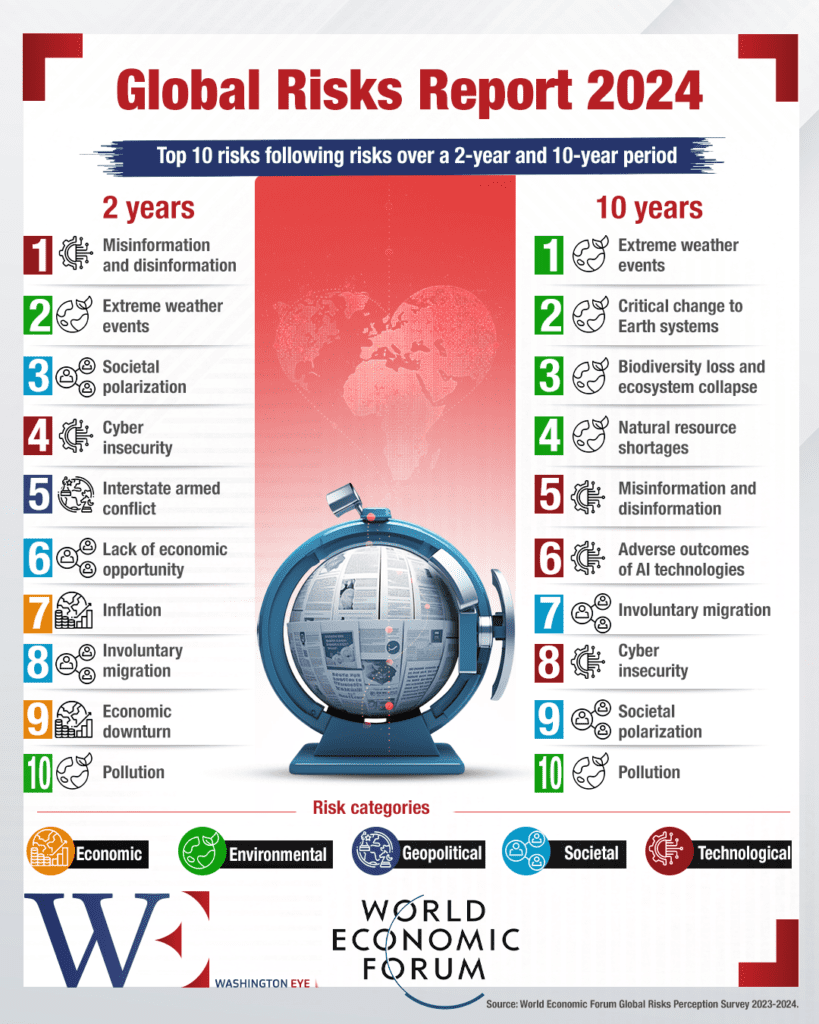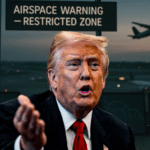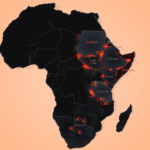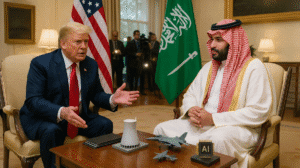The year 2025 is set to be a pivotal moment in global affairs, as nations face escalating geopolitical rivalries, economic realignments, and rapid technological advancements. With the traditional world order evolving into a more fragmented and competitive landscape, the stakes are higher than ever for policymakers and businesses. Insights into the critical role of resilience and collaboration reveal their importance in navigating power shifts and addressing emerging security threats in this dynamic environment.
Geopolitical Realignments: A World in Transition
The international order is undergoing significant fragmentation, characterized by the growing influence of key global powers, particularly the United States and China. As the U.S. is expected to embrace a transactional foreign policy under Trump’s second term, strategic alliances are expected to face strain. Initiatives such as proposed territorial expansions in Greenland and control over the Arctic’s vital resources illustrate a shift toward assertive U.S. positioning in strategic regions. These moves aim to counterbalance growing Chinese and Russian interests in the Arctic, driven by melting ice caps opening new shipping routes and access to rare earth minerals.
Meanwhile, China’s Belt and Road Initiative continues to assert its dominance by fostering deeper ties with developing nations. Its Arctic ambitions and maritime infrastructure investments underscore Beijing’s long-term strategic planning. This has provoked greater alignment among U.S. allies in the Indo-Pacific, as well as among NATO nations in Europe.
Europe faces challenges from within as political shifts—spurred by the Russia-Ukraine conflict and rising populism—push countries to rethink defense and energy strategies. Key developments include increased European defense budgets and proposals for collaborative measures such as a unified nuclear policy. Regional leaders are exploring opportunities to reduce reliance on U.S. security guarantees by enhancing intra-European collaboration, potentially marking a pivot toward greater regional autonomy.

Russia remains a destabilizing force in Europe and beyond, leveraging cyberattacks and covert operations to maintain influence while managing its ongoing conflict in Ukraine. A predicted ceasefire in Ukraine under a Trump-mediated deal could leave Russia with de facto control of occupied territories, further complicating NATO’s stance.
Amid these shifts, alliances like NATO and the Shanghai Cooperation Organization (SCO) are emerging as critical platforms for geopolitical rivalry. While NATO looks to bolster unity among member states, the SCO’s alignment of China, Russia, and others signals a bid to counterbalance Western influence on the global stage. These developments highlight the complexity and unpredictability of the geopolitical landscape heading into 2025.
Economic Uncertainty and Trade Wars
Economic policy shifts in the U.S., including the imposition of tariffs against China and the EU, are set to create significant disruptions in global trade. These measures—seen by some as a “weaponization of interdependence”—could upend supply chains, as highlighted in a Brookings Institution report. The resulting inflationary pressures may exacerbate inequality, particularly in emerging markets.
China’s economic headwinds, including deflationary pressures and a property sector crisis, have prompted Beijing to diversify trade partnerships. The African Continental Free Trade Area (AfCFTA) and agreements in Southeast Asia are gaining prominence in China’s trade strategy, aligning with McKinsey’s predictions of a “pivot to the global south.”
Latin America, meanwhile, is navigating its dual role as a beneficiary of U.S.-China trade tensions and a region susceptible to internal vulnerabilities. A World Bank report stresses the need for targeted investments in infrastructure and education to leverage this unique position sustainably.
Regional Hotspots and Security Threats
This year, analysts underscore growing instability in the following key regions:
- Middle East: The collapse of the Assad regime in Syria, coupled with increasing hostility between Israel and Iran, raises concerns about a broader regional conflict. Experts from the International Crisis Group warn of the potential spillover effects of these dynamics, including risks to global energy supplies.
- Sub-Saharan Africa: Fragile political systems and jihadist insurgencies are creating significant challenges. A Chatham House analysis notes that Russia’s strategic investments in the region—ranging from mercenary deployments to infrastructure projects—could deepen divisions and complicate international peace efforts.
- Asia-Pacific: China’s maritime expansion and North Korea’s missile tests continue to heighten tensions. Regional alliances like the Quad (U.S., Japan, India, and Australia) are responding with increased military cooperation, as detailed in a RAND Corporation report.
Emerging Risks: Terrorism, Cybersecurity, and AI Threats
The evolving nature of terrorism, characterized by lone-wolf attacks and online radicalization, reflects a shifting threat landscape. Reports by the Center for Strategic and International Studies highlight how technological advancements—particularly in artificial intelligence—are creating new vulnerabilities. For instance, AI-driven cyberattacks targeting critical infrastructure pose a significant risk to global stability.
The fragility of undersea communication cables, identified as “critical arteries of the internet,” has emerged as a major concern. Recent incidents involving suspected sabotage underscore the need for international frameworks to protect these vital systems. The Global Commission on the Stability of Cyberspace advocates for cooperative measures to address such vulnerabilities.
Economic Trends: Gold’s Glittering Appeal
Economic and geopolitical uncertainty is driving a surge in demand for gold. Central banks have significantly increased their reserves, as confirmed by the World Gold Council’s latest data. Analysts suggest that gold’s role as a safe-haven asset will likely grow, with prices expected to rise through 2025. However, a Financial Times report warns that over-reliance on gold could expose economies to price volatility in the event of rapid global stabilization.
Looking Ahead
What we see is a world grappling with significant challenges but also opportunities for adaptation and resilience. As scholars like Joseph Nye argue, “smart power”—the ability to blend hard and soft power—will be critical for nations and organizations to thrive in this new era. Collaboration between governments, businesses, and civil society will be essential to mitigate risks and harness emerging opportunities.
Moreover, insights from the World Economic Forum suggest that fostering public-private partnerships will be crucial in addressing emerging global challenges. For example, joint investments in clean energy and infrastructure can create resilient economic systems while mitigating climate risks. Similarly, McKinsey & Company advocates for innovation-driven strategies to enhance productivity and navigate the complexities of fragmented supply chains.
A key theme, as highlighted by the International Monetary Fund, is the importance of inclusive growth. Policymakers must prioritize equitable economic policies to prevent the exacerbation of social inequalities. Programs supporting digital inclusion, access to education, and health care can empower communities to adapt to a rapidly changing global landscape.
For organizations aiming to navigate these global shifts, strategic foresight and resilience planning are no longer optional. They are essential tools for building a sustainable and prosperous future in an increasingly uncertain world.
As we start 2025, the world faces both significant challenges and promising opportunities. From intensifying geopolitical rivalries to economic uncertainties and technological risks, navigating this landscape demands a renewed focus on adaptability, collaboration, and innovation. By fostering global partnerships and investing in resilience, nations and organizations can not only weather the storms of uncertainty but also chart a course toward sustainable and inclusive growth.

















